Have a nice day to all my steemians. Who among you here are familiar with Buyo plant or have scientific name piper betle. I’ve got interested when my friend Yu ask favour in my chat group to have this plant. Here was her message (Lf buyo. Kinsa naay ing ani nga plants? Pwd Mangayo . .pm nko mga higala) She said who among have plants like this? can I ask? Private message me my friends.
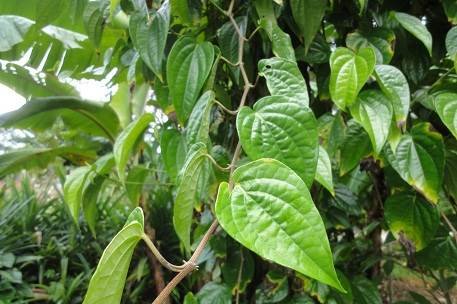
Then I do my research why she ask this plant! so here is what I discovered:
The Piper betle is also known as anis,itmo,ikmo, It is very popular plant in tropical country, and it has many uses.
The Piper betle Constituents
- Chief constituent of the leaves is the volatile oil, Betel oil.
- Contains two phenols, betelphenol (chavibetol) and chavicol.
- Leaves reported to yield an alkaloid: arakene, with properties similar to cocaine.
- Volatile oil, 0.8 - 1.8% - chavicol, betelphenol, eugenol, allyl pyrocatechin, terpene, cineol, caryophyllene, cadinene, menthone.
- Chemical compositions of essential oil differ: safrole in the leaf, stalk, stem and root, ß-phellandrene in the fruit.
- Younger leaves reported to yield more essential oil.
- Leaf and other plant parts have yielded active compounds: hydroxychavicol, hydroxychavicol acetate, allypyrocatechol, chavibetol, piperbetol, methylpiperbetol, piperol A and piperol B.
- Study of essential oil and ether soluble fraction of leaves yielded fourteen components including eight allypyrocatechol analogs. Major constituents were chavibetol (53.1%) and chavibetol acetate(15.5%). Other constituents were allypyrocatechol diacetate (0.71%), campene (0.48%), chavibetol methyl ester (methyl eugenol 0.48%), eugenol (0.32%), α-pinene (0.21%), ß-pinene (0.21%), α-limonene (0.14%), safrole (0.11%), 1,8-cineole (0.04%) and allypyrocatechol monoacetate.
- Hexane fraction of leaf stalks yielded four alipathic compounds in pure form i.e. pentadecyl
6-hydroxytridecanoate, pentatriacontanol, methyl hexacos-7-enoate and 6, 9-heptacosa diene. - Sri Lankan study on essential oil yielded safe role as the major compound from the leaf, stem, stalk, and root and ß-phellandrene from the fruit. The composition of some contents changed with maturity of the leaf.
The Piper betle Properties
- Pungent tasting and warming.
- Leaves considered antitussive, carminative, astringent (juice of leaves with oil), stimulant, expectorant, antiseptic, sialagogue, stomachic, febrifuge and aphrodisiac.
- Chavicol considered an antiseptic, twice as strong and isometric with eugenol.
- Characteristic odor of leaves and oil is due to chavicol.
- Betel oil is a light-yellow to dark-brown liquid, often aromatic, somewhat creosotelike in odor, with a sharp burning taste.
- As a masticatory, leaves described as warm, aromatic and bitter.
- Studies have shown an antibacterial, antitumor,
Piper betle Parts utilized
Vines, leaves, roots, fruits.
The Piper betle Uses in Different countries
In the Philippines

· Fresh and crushed leaves used as antiseptic for cuts and wounds.
· Leaves, together with lime and betel nut, constitute the Filipino's masticatory. Its use believed to help preserve the teeth and a prophylactic against stomach complaints.
· Leaves greased with with lard or sesame oil, used by Filipinos as carminative; applied to the abdomen of children suffering from gastric disorders.
· Relieves gastrointestinal disorders. Juice of leaves used as stomachic.
In China

· Roots, leaves and fruits considered carminative, stimulant, corrective, and prophylactic; used for the prevention and treatment of malaria.
· Used for rheumatic bone pains
· Gastric pain due to exposure to wind, indigestion.
· Flatulence or tympanism: Spread oil on leaf, warm, and apply on abdomen.
· Warm poultice of leaves and oil (coconut) applied to chest of children for catarrhal and pulmonary affections, congestion and other affections of the liver.
· Leaves used as resolvent for glandular swellings.
· Oil used as gargle or as inhalant in diphtheria.
In India

·Leaves are warmed and applied in layers to arrest secretion of milk.
· Leaves applied to the temples to relieve headache.
· Chewing betel leaves early in the morning done to remove foulness of the mouth, sweeten the breath and improve the voice.
In Bangladesh

chewing of betel quid with or without tobacco used to alleviate toothache, lower blood sugar, and aid the digestive processes
In Ayurveda

The leaf juice is utilized as adjuvant and combined with different medicines. The chief preparations of the plant are Lokantha Rasa, Puspadhava Rasa, Brhat sarwajwarahara, lanha, laghu sutaseknara Rasa, Rrhat visamaaj warantaka Rasa.
In ritual masticatory
The Filipinos, Hindus, Malays, Siamese, Cambodians, Annamites and Chinese use the leaves as a masticatory. In the Philippines, it is dabbed with small amounts of apog (lime) and wrapped around a (scraped) betel nut, chewed as "nga-nga." Also known as buyo or hitsu.
Medicinal Benefits Of Betel Leaf
Analgesic
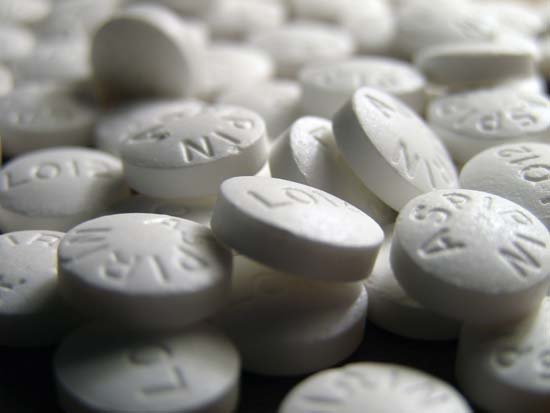
Betel leaf is an amazing analgesic that offers relief from pain. It can be used to alleviate pain caused due to cuts, bruises, rashes, inflammation (internal as well as external), indigestion, constipation, etc. You can simply make a paste of betel leaf and apply to it the bruised area (meant for external application). You can also chew betel leaves and drink its juice to get relief from internal pain.
Eases Constipation

Betel leaf contains the goodness of antioxidants. Antioxidants clear free radicals from the body. This restores the normal PH level of an upset stomach. As a result, constipation is eased. You can simply chew the betel leaf and ingest its juice on an empty stomach each day to get relief from constipation. Another way is mincing betel leaf with water and storing it overnight. Drink the stored water on an empty stomach the next day.
For children suffering from hard stool problem, a suppository made of the stalk of betel leaf dipped in castor oil can be introduced into the rectum.
Improve Digestion

Betel leaf is good for digestion. Its carminative, intestinal, anti-flatulent, and gastroprotective properties made chewing the leaf after a meal very popular. The essential oil can be massaged on the stomach as it helps in the secretion of digestive acids and gastric juices. For children suffering from indigestion, boil betel leaf with a little pepper in water. Strain it, and give two teaspoons of this mixture to children twice a day for an instant cure.
Betel leaf thus increases the body’s metabolism. This triggers circulation and stimulates the intestines to absorb vital minerals and nutrients. Waste gets removed easily through better sphincter performance. Better sphincter performance is also an outcome of the stimulation caused by betel leaf.
Reduces Gastric Pain

Betel leaf is essentially very helpful in improving GERD. It keeps the duodenum free of harmful free radicals and toxins. This further reduces acidity caused due to imbalanced PH levels of the stomach. Optimal PH levels ensure that bloating is eased. Fowl gas passes through sphincter contraction and expansion. This ensures that gastric reflux is eased. Hence, gastric pain subsides easily with constant use.
Increases Hunger

Decreased appetite is also an outcome of an upset stomach. Normal pH levels trigger the hunger hormone to get secreted in optimal amounts. Betel leaf is highly capable of restoring the normal pH levels of the stomach by flushing out all the toxins. Hence, it increases appetite and promotes health.
Promotes Oral Health
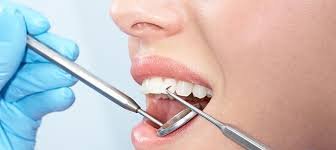
The betel leaf helps to refresh breath, protects against germs, bacteria and other oral pathogens in the mouth. When you chew a betel leaf, it cleanses the mouth. It prevents tooth decay. It helps to strengthen the gums and reinforces the teeth. It prevents oral bleeding. This protective shield can be enhanced by gargling, morning and night, daily, with one drop of betel leaf oil mixed in one cup of warm water. You can also boil some betel leaf in water and use it as a rinse and gargle. It also helps to treat sore mouth.
Treats Respiratory Problems

Betel leaf is very good for treating respiratory problems. It helps to treat cough and cold. It also brings much relief to people suffering from chest and lung congestion and asthma. It even helps to cure breathing problems. You can apply mustard oil to the leaf, warm it and keep it on the chest to cure congestion. Alternatively, boil a few leaves with cardamom, cloves, cubeb and cinnamon in two cups of water. Reduce it up to 1 ½ cup. Strain and drink this concoction three times a day to find instant relief.
Relieves Cough

Betel leaves are amazing ways of easing constant cough. They come loaded with the goodness of antibiotics. These antibiotics ease phlegm and also reduce the inflammation caused due to constant coughing.
How To Make?
- Simply boil betel leaves in water.
- Add cloves and cardamom to it and heat again.
- Drink atleast three times a day.
This is an amazing anti-whooping recipe that eases cough with constant use.
Eases Bronchitis
One of the best betel leaf medicinal uses is that it also acts as an amazing remedy for bronchitis. It reduces inflammation all along the bronchial chord and lungs. This leads to dilated phlegm. Hence, the chest congestion is eased that further improves breathing.
Antiseptic Benefits
Betel leaf is an amazing antiseptic as well. It is rich in polyphenols, especially chavicol. Thus, it offers dual protection from germs. Being a good antiseptic, it can be applied on cuts to kill germs. And since it is loaded with polyphenols, it is used for treating inflammation such as arthritis and orchitis. Local application of the betel leaf acts a pain reliever and an anti-inflammatory agent.
Antifungal Benefits
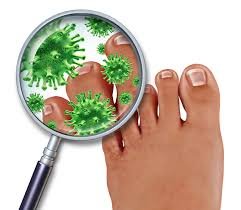
Betel leaf is also an amazing anti-fungal remedy. Fungal infections commonly occur on moist body parts. Thus, betel leaf makes an amazing natural remedy that prevents fungal infections naturally.
Relief From Back Pain And Muscular Tensions
Betel leaf is a good remedy for people suffering from lower back pain or lumbago. A hot poultice of betel leaves or juice mixed with refined coconut oil applied on the loins gives good relief. Massaging the lower back with betel leaf oil and a carrier oil helps to ease the pain. It also provides relief from muscular tension pains, redness, and swelling.
Treats Water Retention And Urination
Betel leaf is a good diuretic. Crush a betel leaf and extract its juice, mix it with a little diluted milk and drink it. This helps to treat water retention in the body. It also helps in easing urination for people suffering from scanty or obstructed urination.
Heals Wounds And Infection
Betel leaves medicinal properties includes healing of wounds and infection. Crush a few leaves, extract the juice, and apply it on the wound or infection. Then put a betel leaf over it and wrap it with a bandage. The wound will heal within two days as it prevents the growth of destructive microbes.
Improves Alertness

If you are feeling sluggish or suffering from nervous exhaustion, the betel leaf is a good remedy to improve alertness. A teaspoon of betel leaf juice with honey acts as a tonic. It can be taken twice a day. It improves mental functioning and treats debility. It also energizes and motivates people, thereby curing them of their sluggishness.
Treats Headache
For people suffering from headache, the betel leaf is a good cure. It has analgesic and cooling properties. You can apply the betel leaf on your forehead to ease headaches. You can also use betel leaf oil for the same.
Acne Cure And Other Skin Disorders
Betel leaf is a good remedy for acne, black spots, etc. Its antimicrobial properties help to treat skin ulceration, allergies, itchiness, and body odor. Crush a few betel leaves and extract its juice, mix with a little turmeric and apply on the acne and allergies to find good relief. Betel leaves boiled in water can be used for washing face and skin to treat and prevent skin problems. Regular usage will help clear spots and acne within a few days. The powerful antimicrobial and antiseptic properties help to treat skin infections.
Stops Earache
Earaches can be irritating and painful. The betel leaf juice or oil is a good remedy for this problem. Mix betel leaf juice or oil and coconut oil and put two drops in the ear. You will find instant relief.
Vaginal Hygiene
For women suffering from vaginal itching and vaginal discharge, betel leaf is a good home remedy. The betel leaves are boiled and are used as a genital wash. In some countries, it is widely used by women after giving birth as it causes genital shrinkage.
Prevents Body Odor

The betel leaf helps to prevent body odour. You can add the juice of betel leaf or oil in your bath water to remain fresh the whole day. You can also drink a concoction made of few betel leaves soaked in boiled water, with a spoon of white sugar added to it. It prevents the unpleasant smell of perspiration and menstruation.
Nose Bleed

Betel leaf is a good remedy for nosebleed. Many young children suffer from it when they play outdoors in the hot sun. The betel leaf helps to stop the blood flow. Roll a fresh betel leaf and insert it in the nosebleed. It takes about 30 minutes to stop the blood flow.
Treatment Of Inflammation
The betel leaf oil has a phenol called chavicol, which has antiseptic properties. It is used for treating inflammation in serious conditions such as arthritis and orchitis.
Refreshes Breath
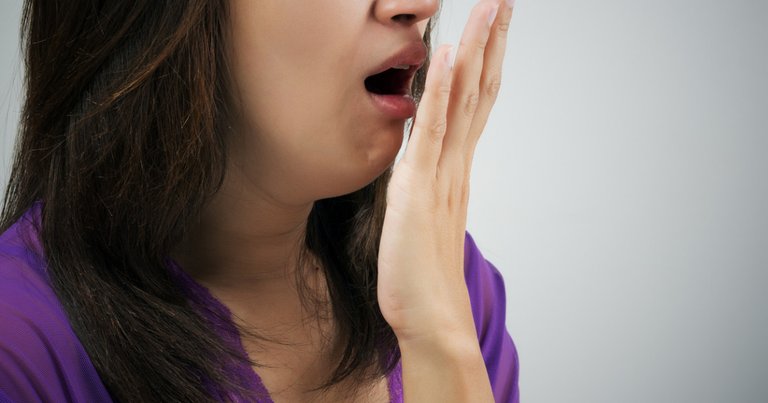
The betel leaf oil helps to refresh breath, protects against germs, bacteria and other oral pathogens in the mouth. It prevents tooth decay. It helps to strengthen the gum and reinforces teeth. It prevents oral bleeding. This protective shield can be enhanced by gargling, morning and night, daily, with one drop of Betel leaf oil mixed in one cup of warm water.
The betel leaf can cure and prevent various ailments and illnesses. It is better to use these home remedies than taking prescription drugs, which can be costly and have various kinds of side effects. Betel leaf is available in most parts of the world, and if not, then the essential oil of the betel leaf too can be used to reap the medicinal benefits of betel leaf. However, be cautious of not consuming it with tobacco and other hazardous products.
So, now you are aware of many benefits of betel leaf. I hope this will help you in times of need. Thank you for reading
 Love you all @abdulsanguila
Love you all @abdulsanguila
thank you guys for upvoting
@lorner @jejes @juzmen-juvy18 @wews @maeolloves143 @xcel2018 @yzah @abdulsanguila @nikkitheexplorer @princessjoyesto @kizzybete @rusticocapz @marofelestuita @ezeo @charvy @earlanthony @hazelwink @markuzu